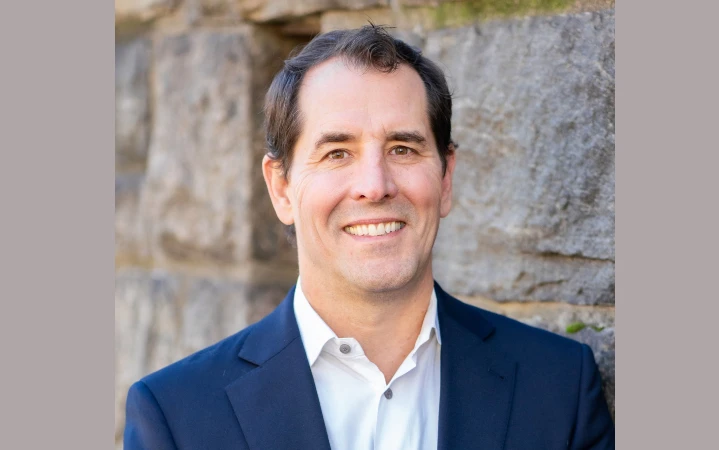Creating a More Equitable Future: The Power of Employee Ownership
By Mike Brady | October 17, 2024 11:26 am
Greyston Bakery trailblazer in second-chance employment says it’s time employees share the wealth they create.

During my tenure as CEO of Greyston Bakery, a commercial food manufacturer best known as the supplier of brownies for Ben and Jerry’s ice cream, I witnessed the transformative power of employment. Greyston’s open hiring model, which gave anyone who came to the door a job regardless of their background, was revolutionary. It provided a pathway for people facing significant barriers to employment, including those with criminal records, to earn a living wage, integrate into the community and gain a sense of purpose.
However, while Greyston Bakery provided essential support services such as healthcare, workforce development and childcare, it did not offer its employees a stake in the company. The bakery was wholly owned by Greyston Foundation, a 501(c)(3) nonprofit organization. This structure allowed us to achieve many positive outcomes for our employees, but it fell short in one critical area: wealth building. Employees could benefit from stable employment and supportive services without owning a stake in the bakery, but they could not share in the financial success of the company they helped build.
This missing ingredient — employee ownership — became increasingly apparent to me as I reflected on the broader implications of our work at Greyston. While access to a job can transform lives, it doesn’t change a system that is heavily skewed against those at the lower end of the economic spectrum. Seventy percent of Americans born into the lowest income bracket will never reach middle income. While complex socioeconomic factors play a significant role, this is largely because the jobs available to them often pay low wages, offer little job security and lack essential benefits, making it nearly impossible to save or invest for the future. Asset ownership is vital for addressing income inequality because it empowers individuals to build wealth beyond merely earning income. Even modest equity stakes in a business, when nurtured over time, can significantly impact workers across all income levels, thereby broadening wealth distribution and fostering a more equitable economy for everyone.
A Catalyst for Change
A potential catalyst for systemic change is approaching as we stand on the verge of a significant demographic shift, often referred to as the “Silver Tsunami.” This cleverly coined term refers to the aging of the baby-boomer generation, those born between 1946 and 1964, a period marked by a spike in birth rates after World War II. As this large group of individuals, now in their late 50s to mid-70s, begins to retire, the country faces the challenge of managing the transfer of an estimated $10 trillion in assets over the next decade.
The baby-boom generation owns an estimated 2.3 million small businesses, representing 25 million jobs. The vast majority of these businesses are profitable, making this the most successful age group of small business owners in the county. However, fewer than a quarter of these businesses have clear succession plans, leaving a significant portion of the market at risk of either being consolidated by large corporations or, worse, closing down entirely. This unprecedented transition presents a unique opportunity for entrepreneurs, investors and policymakers to step in and drive meaningful change through employee ownership.
By transitioning ownership to employees, these businesses can continue to thrive, retaining jobs and preserving local economic stability. Furthermore, extensive research supports that employee-owned companies often outperform their peers in several critical areas, including productivity, profitability and employee satisfaction. According to a study by the National Center for Employee Ownership, employee-owned companies see a 4% higher annual growth rate than non-employee-owned firms, which over time translates to a significant competitive advantage. This impending transfer of wealth could be a tipping point in our ongoing struggle to address economic inequality.
Private Equity’s Embrace of Employee Ownership
The giants of private equity are awakening to the power of employee ownership. KKR’s employee ownership strategy, recently featured on “60 Minutes,” and Blackstone’s public commitment to shared ownership models demonstrate how they are becoming integral to their value-creation playbooks. These strategies are not altruistic; they are driven by a recognition that businesses perform better when employees have skin in the game.
KKR, for example, has integrated employee ownership into several of its portfolio companies, resulting in what it describes as a “virtuous cycle” where employees feel more invested in their work, which in turn drives better business outcomes. These practices have demonstrated that employee ownership is not just a tool for economic equity but also a powerful business strategy that can lead to superior financial performance. By integrating shared ownership into their approach to improving business performance and job quality, companies are seeing enhanced productivity, reduced turnover and stronger alignment between employee and company interests.
This shift is further supported by recent research from the Workforce & Organizational Research Center, which highlights the growing importance of job quality in value creation at private equity firms. According to WORC’s CEO, Ellen Frank-Miller, “Private equity’s traditional focus on the C-suite is evolving. Firms are beginning to recognize that frontline workers, not just executives, are critical to value creation. When employees have a stake in the company, it drives better business outcomes across the board.”
The Broader Impact: Aligning with Supply Chain Partners
Employee ownership does more than just benefit the internal stakeholders of a company; it can also have a profound impact on supply chain partners and the broader economy. When employees have a stake in the company, they are more likely to take a long-term view of the business’s success, which often translates into stronger relationships with suppliers, customers and other key stakeholders. This alignment of interests can lead to more sustainable business practices and a more resilient supply chain.
Consider the case of Eileen Fisher, a women’s clothing brand that transitioned to an employee-owned structure through an Employee Stock Ownership Plan (ESOP). This move not only preserved the company’s independence but also enhanced its relationships with suppliers and partners. The brand’s commitment to ethical production and sustainability was reinforced by the fact that every employee was now an owner, deeply invested in the company’s mission and reputation. This alignment created a ripple effect throughout the supply chain, leading to more collaborative partnerships, improved terms and more sustainable business practices.
Under the program, which began in 2006, all employees receive a stake in the company. They can exchange their shares for cash at retirement or upon leaving the company. In addition, employees receive an annual profit-sharing bonus. Eileen Fisher says, “I think even 10% of the profits is good for morale and for people feeling like they’re really a part of this company. People speak up more when they see things that don’t feel right or if people are wasting money over there.”
Historical Movements and the Case for Employee Ownership
The concept of employee ownership is not new; it has deep roots in historical movements that sought to balance the scales of economic power. The cooperative movement of the 19th and 20th centuries, for instance, was driven by a similar desire to give workers a stake in the businesses they helped build. Cooperatives in agriculture, retail and manufacturing provided a model for how shared ownership could lead to more equitable outcomes and greater economic stability.
One of the most significant examples of employee ownership in the 20th century was the Mondragon Corporation in Spain, a federation of worker cooperatives that grew to become one of the largest and most successful business groups in the country. Mondragon’s success demonstrated that employee ownership could be scaled and that it could compete with traditional capitalist models on an equal footing.
The Mondragon model has since inspired similar efforts worldwide, including in the United States, where today entrepreneurial organizations like Obran Cooperative are innovating on the cooperative model. Founded in 2019 in Baltimore City, Obran’s unique holding cooperative structure allows it to acquire and manage profitable small to medium-sized businesses and real estate on behalf of its worker-owners. Obran’s work has expanded to encompass diverse sectors, including home healthcare, staffing and distribution, proving that the cooperative model can thrive in varied industries while fostering inclusion and equality.
The principles that drove these historical movements are more relevant than ever. As wealth inequality continues to grow, the need for models that promote broader ownership and shared prosperity have become increasingly urgent. Employee ownership offers a proven pathway to achieving these goals, providing a counterbalance to the concentration of wealth and power in the hands of a few.
The Role of Government and Policy
For employee ownership to reach its full potential, government support and policy incentives are essential. Programs like the Main Street Employee Ownership Act, passed in 2018, have provided support for businesses transitioning to employee ownership by making it easier for them to access financing and technical assistance.
Additional government incentives and policies are being established at both the federal and state levels to support employee ownership, and it’s encouraging to see the momentum building. The Department of Labor is launching the Division of Employee Ownership in quarter four of 2024 within the Employee Benefits Security Administration. The division, funded under the Worker Ownership, Readiness and Knowledge Act, aims to expand employee ownership across the U.S. by providing education, outreach and technical assistance to help facilitate the transfer of business ownership to workers.
Another promising area is the tax treatment of employee ownership transactions. Current tax incentives, like those available for ESOPs, have successfully encouraged businesses to adopt employee ownership, and there’s potential to broaden these incentives to include other forms of employee ownership, such as employee ownership trusts (EOTs) and profit-sharing plans.
Moreover, regional economic development agencies, local governments and financial institutions are stepping up by offering grants, low-interest loans and technical assistance to businesses exploring employee ownership transitions. These efforts are crucial in creating a supportive policy environment that can help the Silver Tsunami lead to a broader distribution of wealth rather than further concentration. As these initiatives expand, they will not only benefit individual workers but also contribute to a more stable and resilient economy, ensuring that the next generation of business owners and employees can thrive together.
The Call to Action
Employee ownership is more than just a business model; it is a movement that can reshape the economic landscape for the better. As we navigate the challenges and opportunities of the coming decades, the power of employee ownership will be a critical lever in creating a more equitable, just and sustainable economy. But realizing this potential requires action from all corners — entrepreneurs, investors, policymakers and business leaders must come together to embrace and promote these models.
We stand on the brink of a massive transfer of wealth, and the urgency to create a more equitable economy has never been greater. The time to act is now. By leveraging the forces of the Silver Tsunami and the growing momentum behind employee ownership, we can create a future where wealth is more broadly distributed, where businesses are more resilient, and where workers are truly empowered to share in the success they help create. The potential for meaningful change has never been greater, and the responsibility to seize this moment lies with all of us.
Mike Brady, former CEO of Greyston Bakery, is the co-founder of the Organic Food Incubator and an operating partner at Southeast Acquisition Capital.




